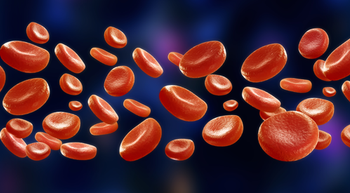
AACR Report Shows Importance of Cancer Research
Between 2014 and 2016, the number of cancer survivors living in the United States rose by one million. This is just one of the many benefits the Cancer Progress Reports lists from cancer research.
Nancy Davidson, MD
According to a new report by the American Association for Cancer Research (AACR), the number of cancer survivors living in the United States rose by one million between 2014 to 2016. The total number of survivors is now a record 15.5 million.
Nancy Davidson, M.D., the president of AACR and the director of the University of Pittsburgh Cancer Institute, says this figure demonstrates progress. In an interview with Oncology Nursing News, she attributes the advancements to “an increasing knowledge about cancer biology, what underlies cancer cells.”
Increasingly, Davidson says, researchers and oncologists have “been able to take that knowledge and translate it into new tests and new interventions that provide a more precise cancer medicine, toward a more precise cancer care.”
AACR’s 2016 Cancer Progress Report was recently released with the goals of increasing the public’s understanding of cancer; highlighting the importance of cancer research to improve public health; and advocating for increased funding for the National Institutes of Health (NIH), National Cancer Institute (NCI), and FDA. As Davidson puts it, with this funding, the goal “is to reduce the burden of cancer, in every way, shape, and form that we possibly can” and provide the AACR and researchers with “the opportunity to have a really sustained, reliable research budget.”
The report also expresses support for the National Cancer Moonshot Initiative’s Blue Ribbon Panel. Vice President Joe Biden, who oversees the Cancer Moonshot Initiative, asked for 10 years of cancer advancements progress in only 5 years.
“The Blue Ribbon Committee has put out 10 different areas where they think that investments in the short- to moderate-term would have the possibility of really being able to work toward that goal,” Davidson says, noting that she hopes funding would go toward furthering that initiative as well.
Also within the report was a summary of the advances that have come in the last year, both to prevent and treat cancer.
Immunotherapy is without a doubt the hottest treatment option for many cancers. From just August 1, 2015, to September 1, 2016, the diseases with FDA-approved checkpoint inhibitors expanded from melanoma and lung cancer to include bladder cancer, head and neck cancer, Hodgkin lymphoma and kidney cancer. And between August 1, 2015, and July 31, 2016, 4 of the 13 new anticancer therapeutics that were approved were immunotherapies.
An additional 4 of those 13 approved therapeutics were targeted agents, which underscores advances made in precision medicine, Davidson says.
Davidson hopes that we will see more developments in “precision prevention and precision detection.” She explains that the current standard for screening is fairly generic and could benefit from a more precise process. Better detection could lead to better prevention, according to Davidson. If physicians were able to tell if an individual had a higher risk of a certain cancer, then that individual would “want to take some kind of prevention strategy that they wouldn’t want to otherwise,” she says. “They might be willing to be more engaged in that than if they were at average risk.”
Despite advancements and progress, however, cancer continues to exert an immense personal and economic toll. The report stated that 595,000 people are projected to die of cancer in 2016, with new cases of cancer in the United States predicted to rise from 1.7 million in 2015 to 2.4 million in 2035. Additionally, the report listed the direct medical costs of cancer care in the United States in 2010 as $125 billion — a figure that is expected to rise to $156 billion in 2020.
Advances in cancer treatments, Davidson says, could help with the individual financial burden of cancer as well.
“With more precise cancer therapies, people would be exposed to and receive the kinds of therapies that are the most likely to benefit them. They would be less likely to take therapies that aren’t going to help them,” she says. “And that would help not only in terms of toxicity of therapy,but also would help to reduce their financial risk as much as possible.”
There’s also the issue of the disparities in cancer rates and the effects among certain populations: racial/ethnic minorities, those of lower socioeconomic status, certain geographic regions, and the elderly. On this topic, Davidson points out that access to care is necessary for any further advancements.
“We need to make sure that patients who need that therapy have the opportunity to take that therapy, and are adhering to the therapy.”
On how to improve access, Davidson says: “There are certainly ways that we can make sure that care and counseling are provided in a culturally appropriate manner. It’s very important that we take the information that we have and make sure that it’s tailored to the individuals who need to receive it.”
All in all, Davidson says, work still needs to be done.
“[No research] is going to reach its full potential if we don’t see our leaders putting us into a position where we have robust and sustainable funding for the NIH, for the NCI, and for the FDA.”
For more on the report, click
Newsletter
Knowledge is power. Don’t miss the most recent breakthroughs in cancer care.

















































































